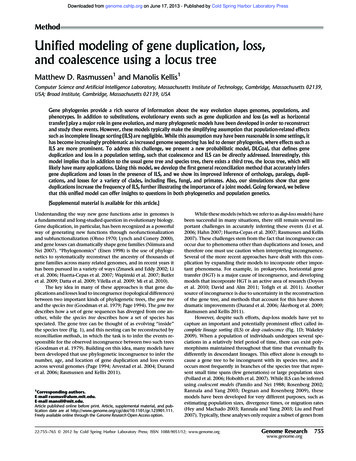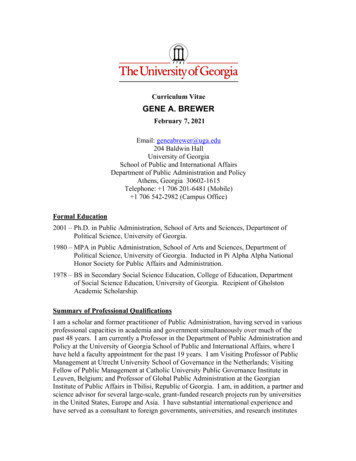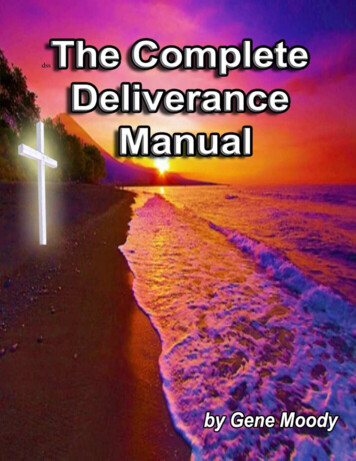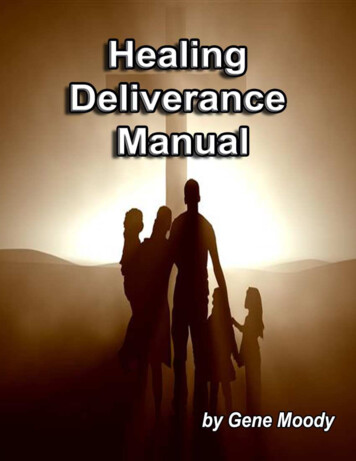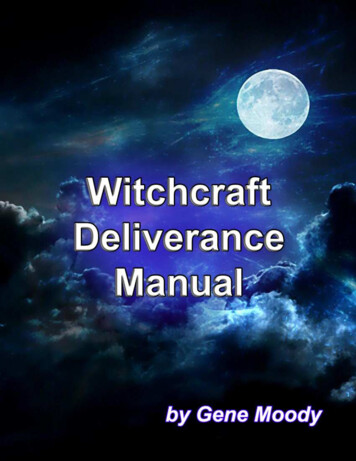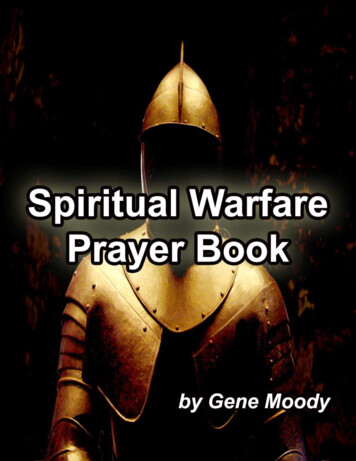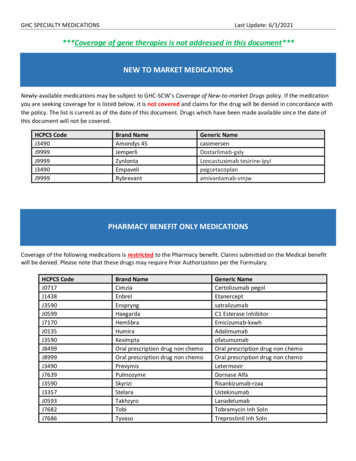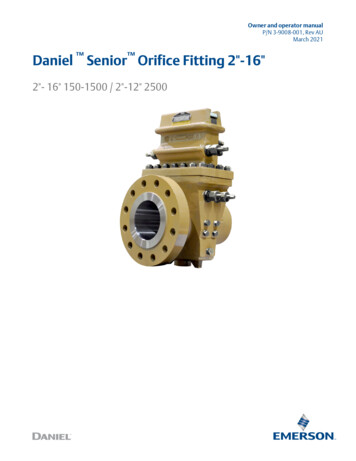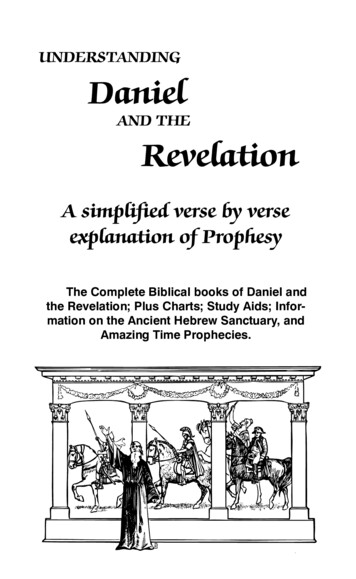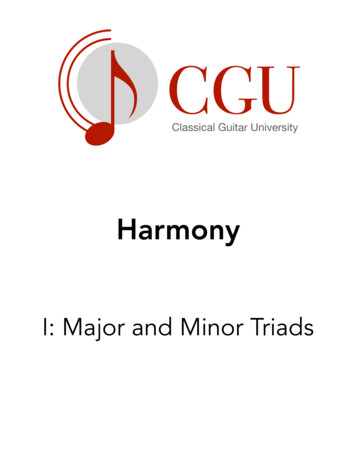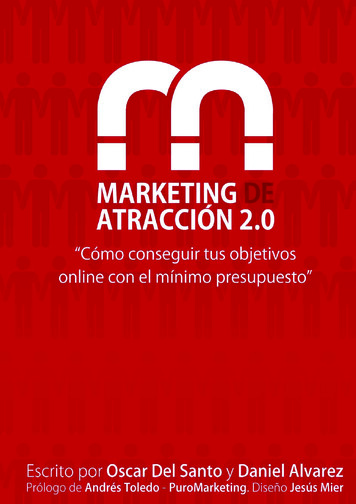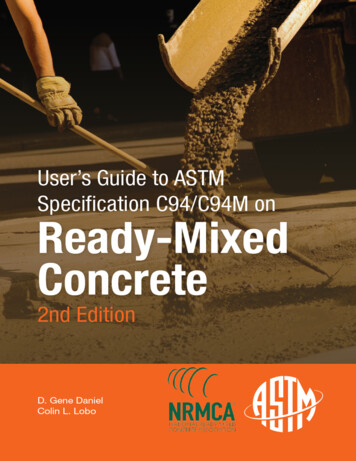
Transcription
D. Gene Daniel and Colin L. LoboUser’s Guide to ASTMSpecification C94/C94M onReady-Mixed Concrete:2nd EditionASTM Manual SeriesASTM Stock Number: MNL49-2NDASTM International100 Barr Harbor DrivePO Box C700West Conshohocken, PA 19428-2959USANRMCANational Ready Mixed Concrete Association900 Spring StreetSilver Spring, MD 20910, USAPrinted in the U.S.A.
Library of Congress Cataloging-in-Publication DataDaniel, D. Gene, 1934[User’s guide to ASTM specification C94 on ready-mixed concrete]User’s guide to ASTM specification C94/C94M on ready-mixed concrete / D. Gene Daniel, Colin L. Lobo. -- 2nd edition.pages cmRevised edition of: User’s guide to ASTM specification C94 on ready-mixed concrete / D. Gene Daniel and Colin L.Lobo. 2005.Includes bibliographical references and index.ISBN 978-0-8031-7054-4 (alk. paper)1. Ready-mixed concrete–Specifications–United States. I. Lobo, Colin L., 1961- II. Title.TA439.D25 2013666’.893–dc232013041858Copyright 2014 ASTM International, West Conshohocken, PA. All rights reserved. This material may not bereproduced or copied, in whole or in part, in any printed, mechanical, elec tronic, film, or other distribution andstorage media, without the written consent of the publisher.Photocopy RightsAuthorization to photocopy items for internal, personal, or educational classroom use of specific clients, is grantedby ASTM International provided that the appropriate fee is paid to ASTM International, 100 Barr Harbor Drive, PO BoxC700, West Conshohocken, PA 19428-2959, Tel: 610-834-9634; online: http://www.astm.org/copyright/ASTM International is not responsible, as a body, for the statements and opinions advanced in the publication. ASTMInternational does not endorse any products represented in this publication.ASTM International100 Barr Harbor DrivePO Box C700West Conshohocken, PA 19428-2959, USAPhone: (610) 832-9585Fax: (610) 832-9555E-mail: service@astm.orgWebsite: www.astm.orgISBN 0-8031-3363-4ASTM Stock Number: MNL 49-2NDNRMCANational Ready Mixed Concrete Association900 Spring StreetSilver Spring, MD 20910, USAPhone: (301) 587-1400Fax: (310) 585-4219E-mail: publications@nrmca.orgWebsite: www.nrmca.orgNRMCA Order Number: 2PMNL 49Printed inMayfield, PAMay, 2014
iiiForewordThis publication, User’s Guide to ASTM Specification C94/C94M on Ready-Mixed Concrete,was co-published by ASTM International and the National Ready Mixed Concrete Association(NRMCA). It was both authored and edited by D. Gene Daniel, concrete consultant, Claremore,Oklahoma; and Colin L. Lobo, National Ready Mixed Concrete Association, Silver Spring,Maryland. This publication was sponsored by Committee C09 on Concrete and ConcreteAggregates and it is the second edition of Manual 49 of ASTM’s manual series.
ced Documents53.Terminology74.Basis of Purchase115.Materials176.Ordering Information417.Tolerances in Slump or Slump Flow558.Air-Entrained Concrete619.Measuring Materials6910. Batching Plant8111. Mixers and Agitators9112. Mixing and Delivery10113. Use of Nonagitating Equipment12114. Batch Ticket Information12315. Plant Inspection12916. Practices, Test Methods, and Reporting13117. Sampling and Testing Fresh Concrete14118. Strength14919. Failure to Meet Strength Requirements15920. Keywords16321. Annex A1. Concrete Uniformity Requirements (Mandatory Information)16522. Appendix (Nonmandatory Information)171Index179
viiPrefaceWhat is ASTM?To fully understand ASTM C94/C94M, Specification on Ready-Mixed Concrete, it is necessary to understand ASTM and theconsensus process for developing standards such as ASTM C94/C94M. Getting a view of ASTM from its conception takes usback more than a century. The time period involved is betweenthe American Civil War, which ended in 1865, and World WarI, which began in 1914. The true beginning of ASTM coincidedwith the Spanish-American War fought in 1898.The world, and more specifically the United States, was inthe midst of the second phase of the Industrial Revolution.Major advances in communication and transportation weretaking place in a country that in the late 1890s consisted of 45states. The diesel engine, electrical power, and the steel industrywere all coming into prominence. The United States was agrowing, developing, and prosperous nation with industrialcorporations, some of which have gone on to grow into giantsthat remain today. William McKinley was elected President in1896, re-elected in 1900, and assassinated in 1901.This growth period and the industrial revolution werethe backdrop that fostered ASTM. The North American railroad network was expanding in all directions less than 30years after the completion of the first transcontinental railroad. Charles Dudley, holder of a Ph.D. from Yale University,was a chemist for the Pennsylvania Railroad. Mr. Dudley’sdegree preceded by two years Custer’s Last Stand at the Battleof the Little Big Horn in the hills of Montana. A portion ofMr. Dudley’s duties included doing research to develop moredurable steel for use as rails and writing a specification conveying those findings to the rail manufacturers. Mr. Dudley’sideas did not always coincide with those of the steel manufacturers or the other railroads that were buying steel rails.These problems of differing viewpoints led to the first meetings of manufacturers, chemists, engineers, and others in thesteel and railroad or bridge business to develop standardseveryone could tolerate. The idea that emerged was that goodmaterial standards require the input of manufacturers,designers, builders, and users. This was the idea in June of1898 when ASTM was first formed under another name,American Section of the International Association for TestingMaterials. From the first meeting, the goal was to developconsensus standards.The first committee dealing with cement, C01, was formedin 1902, and the concrete and concrete aggregates committee,C09, formed in 1914.The scope of ASTM has continued to expand, and its namehas continued to change. The name today is ASTM International,reflecting both its wide use and a broad international membership. From the original 70 members, ASTM International(ASTM) has grown to more than 30,000 members. For the 100plus years of its existence, the committee work has remained inthe hands of volunteers.What is Subcommittee C09.40?At the bottom of the first page of the document ASTMStandard Specification for Ready-Mixed Concrete (C94/C94M) isa notation: “This specification is under the jurisdiction of ASTMCommittee C09 on Concrete and Concrete Aggregates and isthe direct responsibility of Subcommittee C09.40 on ReadyMixed Concrete.” Very simply, Subcommittee C09.40 is thegroup of people who do the actual writing of ASTM C94/C94M.This subcommittee is typically composed of approximately100 people, including manufacturers of ready-mixed concrete, private engineers from design firms and materialtesting firms, state highway department engineers, representatives of federal agencies, representatives of trade organizations,professors from foreign and domestic universities, contractors,and representatives from concrete material producers, suchas cement and chemical admixtures, as well as others whohave a relationship to the industry. Most of these people areengineers or scientists whose daily activities involve themwith the concrete industry. Most, but not all, live in the UnitedStates.Subcommittee C09.40 is only one of many subcommitteesthat function as a part of the Committee C09 on Concrete andConcrete Aggregates. The main body of Committee C09 dividesinto approximately 29 subcommittees to develop consensusstandards for the concrete and concrete aggregates industry.
viiiUser’s Guide to ASTM Specification C94 on Ready-Mixed ConcreteASTM Standards Development ProcessASTM standards development follows a consensus process consistent with requirements of the American National StandardsInstitute (ANSI). ANSI facilitates the development of AmericanNational Standards (ANS) by accrediting the procedures ofstandards developing organizations (SDOs) like ASTMInternational. SDOs work cooperatively to develop voluntarynational consensus standards. An important requirement is toensure the voting producer representation on the committee isbalanced between voting representation by users and by generalinterest members. Each company or entity is assigned one vote,and additional representatives from that entity are provided anonvoting status. This ensures that the interests of one particular group do not bias the development of the standard and thatall viewpoints are addressed. The development of standardsthrough consensus requires time and compromise but ensures,for the most part, that the standards developed satisfy allaffected groups. American National Standards developmentprocess is usually referred to as “open” standards development.In this sense, “open” refers to a process used by a recognizedbody for developing and approving a standard. This ensures acollaborative, balanced, and consensus-based approval process.The content of these standards may relate to products, processes, services, systems, or personnel.New standards or revisions to existing standards withinASTM usually begin within a task group of a subcommittee.The task group develops a written ballot that is submitted forletter ballot to the subcommittee. Reviewing subcommitteeballots and voting is both a privilege and a responsibility ofcommittee membership. When a subcommittee member castsa negative vote on a ballot item, an explanation of what the voterobjects to and what changes could be made to satisfy theconcerns of the negative voter is required.For a ballot to become valid, at least 60 % of the votingsubcommittee members must have voted. For a ballot item tobe successful, two thirds of the eligible voting members mustvote affirmatively on a ballot item. To advance to the nextlevel, the subcommittee vote must be positive for two thirds ormore of those voting. In reality, each negative vote of a member, voting or nonvoting, is vetted, or the ballot item withdrawn and revised, if possible, into a new subcommitteeballot.The item is then either re-balloted at the subcommitteelevel, or with the approval of the committee chairman therevised item may be balloted concurrently at both the subcommittee and committee levels. The committee levelinvolves all the members of the various subcommittees. Inthe case of the Committee C09 this involves approximately29 subcommittees and 700 members. Committee C09 meetsin June and December each year with a usual attendance of150 to 200 members. It is at these semiannual meetings thateach negative ballot is vetted and voted on.At the committee level a ballot item must receive affirmative votes on at least 90 % of the votes cast for approval.If approved at the committee level, the balloted item isapproaching ASTM membership approval.Simultaneously with the committee level vote, the proposed change is also subject to a vote by the entire ASTMSociety, which includes all the ASTM members in variouscommittees. No voting percentages are required at this level,but negative votes must again be considered.The consensus system also provides for an appeal by a negative voter. The appeals system varies depending upon thegrounds stated for the appeal. A Committee on Standardsassures that due process is followed.The primary point of the entire process is that eachnegative voter’s voice and arguments are heard, and the subcommittee or committee is then afforded the opportunity tovote on an issue based on the thoughts and reasoning of onemember of the group. A single objection often influencesothers and alters the content of a proposal or kills the proposalcompletely. ASTM firmly believes in the old adage that twoheads are better than one and has set up a system to ensurethat each member’s voice is heard.Original ASTM Specification for Ready-MixedConcreteThe original C-9 (now C09) committee required six years(1914–1920) to issue its first standard. The first standardaddressed the proper means of molding and storing concretecylinders in the field and described methods still in use today.The first product specification was issued in 1933 as a tentative specification for ready-mixed concrete. The topics covered did not vary much from today’s standard, over 75 yearslater.The specification has been revised many times sinceapproved in 1935 and continues to undergo revisions to remainin step with technological advances, such as load-cell weighing,and environmental issues, such as limiting plant runoff waterby the use of non-potable water in the batching process.The roots of a successful specification go back to theabilities of the committee who prior to 1933 published a comprehensive document prescribing the materials, proportioning,mixing, delivery, quality, inspection, testing, and acceptance ofready-mixed concrete for delivery to the job site ready for use.An equivalent specification to ASTM C94/C94M ispublished by the American Association of State Highwayand Transportation Officials (AASHTO) M 157 StandardSpecification for Ready-Mixed Concrete. As the associationname implies, this organization includes representatives fromeach state and some other entities involved in construction oftransportation infrastructure. Development of AASHTO standards does not follow the typical consensus process becauseAASHTO limits voting interests to designers and users (statedepartments of transportation) and excludes industry representation. AASHTO Subcommittee on Materials reviewschanges to ASTM standards and chooses to ballot these changesto the AASHTO standards. Some AASHTO standards are
Prefaceessentially very similar to ASTM standards. AASHTO M 157 isstructured slightly differently than ASTM C94/C94M, but thetechnical differences are relatively minor. There are severalsections of ASTM C94/C94M that are not covered in AASHTOM 157. The greatest difference between the two speci
User’s Guide to ASTM Specification C94/C94M on Ready-Mixed Concrete: 2nd Edition ASTM Manual Series ASTM Stock Number: MNL49-2ND ASTM International 100 Barr Harbor Drive PO Box C700 West Conshohocken, PA 19428-2959 USA NRMCA National Ready Mixed Concrete Association 900 Spring Street Silver Spring, MD 20910, USA Printed in the U.S.A. Library of Congress Cataloging-in
